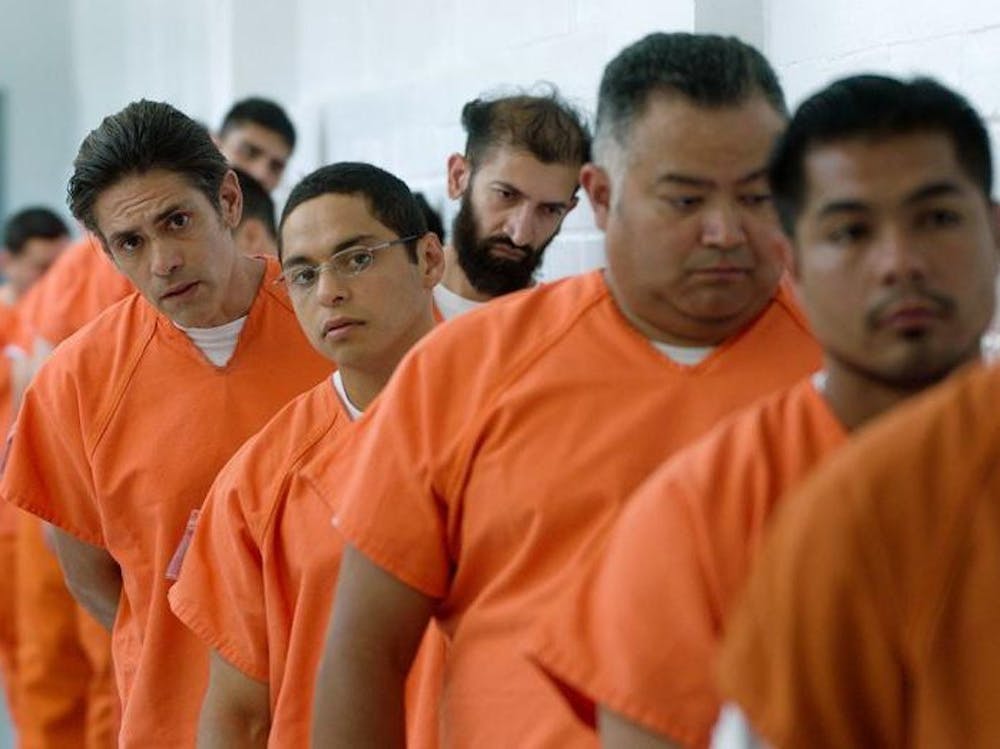The news is alight with stories and videos of law-abiding immigrants snatched away by Immigration and Customs Enforcement in front of their loved ones, families ripped apart and pregnant women blasted with fire hoses. They are taken to detention centers, where they either apply for asylum or wait to be deported. These facilities are shrouded in mystery and concerningly under-regulated.
Alex Rivera and Cristina Ibarra’s “The Infiltrators,” which premiered earlier this year at Sundance, follows a group of teenagers working for the National Immigrant Youth Alliance (NIYA) to release undocumented immigrants from the Broward Detention Center just north of Miami. It opens with the male lead, Marco, purposefully getting himself interned at the facility in order to encourage wrongfully detained persons to call his organization for aid. Through relentless badgering of public officials and careful navigation of a corrupt system, Marco’s friends work tirelessly to free the inmates.
Because of the devastating subject matter, it can be hard to judge the film on its own merits. It is a blend of documentary and biopic, meaning that all scenes outside of the Broward Detention Facility are real-life, while all those within are staged and shot at an abandoned psychiatric hospital in California. Professional actors portrayed their subjects inside the facility, and only occasionally are we shown the actual people.
The film is profoundly engaging during its documentary scenes. Seeing young people waging a full-scale war on detention facilities by appealing to members of Congress in their parents’ living rooms and at booths in cheap restaurants is fascinating. Watching them interact as friends while competently navigating complex deportation procedure leaves the viewer in awe. It shows that real change is possible and that, through persistence, the government will listen to the people. The viewer leaves the theater knowing that they have the ability to make a difference.
However, during the scenes “inside” the facility, the film occasionally loses that magical quality. Of course, the true events will always be more compelling than their recreation, but there is no real effort to instill the same weight that the documentary portion has in spades. The actors are serviceable but hold no claim to any higher accolade. They are stripped of any opportunity to play with the characters, so they end up as lifeless copies of real heroes.
The narrative on the inside is designed to feel like a prison break, and the energy is one desperately trying to mix the Latin American aura of “Narcos” with the paradoxically urgent calm of “Shawshank Redemption.” It fails to do either. The story, while mind-blowing by the standards of normal life, is not as captivating as either of those works. Rivera and Ibarra try to portray the activists as bold outlaws instead of brave emissaries of a group of protestors, but that sheen crumbles throughout and finally falls in the pointedly anti-climactic end.
An oddity in “The Infiltrators” is its treatment of women. NIYA was under the impression that Broward was a men’s-only facility, but Marco sees a woman’s wing and reports the finding. It highlights the backseat that women’s issues take to men’s. The organization charged with protecting all undocumented people was not even aware that an equal number of women were inmates in the same facility. The female lead, Viridiana, is a highlight. On the outside, she is both efficient and tenacious in her work, making phone calls and filing reports from sunup till sundown. But in the facility, the actor that plays Viridiana is timid and looks frightened for the whole movie. The difference in their attitudes is jarring.
The side characters are arguably the most interesting aspect of the in-facility scenes. Marco and Viridiana both gain valuable allies of the inmates. Some of them are important and fully developed with heartbreaking backgrounds, others steal the spotlight for 30 seconds and are immediately forgotten and others still are fascinating set pieces used to demonstrate the horrors of these facilities. They humanize the issue. These are the people that are being wrongfully deported to dangerous places with no regard for their safety. When viewing, it is beneficial to focus on them.
The cinematography is hit or miss: The opening animation is gluey and unpleasant and there are a few choppy transitions that, if they were purposeful, did not expound on said purpose. Conversely, the real-life scenes are shot steadily and well-angled. Inside the facility, the direction is tight and moves at a reasonable pace, but there are some cliche “inspirational” moments — such as the courtyard protest which moves into a painfully predictable shot of Claudio — that fall flat on their faces.
Overall, the point of “The Infiltrators” is to highlight a group of young people fighting for change. It shows them being extraordinarily brave while working completely within the confines of the law and producing results. In an era where pretty much everything in our world needs to be fixed, it is imperative to acknowledge that you are never too young, poor or unqualified to work for the world you want.
Get The Chronicle straight to your inbox
Signup for our weekly newsletter. Cancel at any time.

